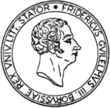Johann Jakob Sauter's adding machine from the late 18th century
In addition to the particularly impressive circular calculating machine for the four basic arithmetic operations by Johann Jakob Sauter Jr. from 1796, which we presented to you a few months ago, he also built a rectangular adding machine, which we have the pleasure of presenting to you this week. Supported by five lions, the machine appears to float above its base. The filigree work can also be seen in the frames of the enameled place markers under the setting and result unit. The original is in the Science Museum in London. The Arithmeum was kind enough to open the original machine, measure it, document it and produce a faithful replica. This was completed by Mr. Badur in Hanover to his usual perfection in time for Christmas and will hopefully soon be physically available in the Arithmeum. The transfer of tens is realized by a single tooth that hits a crescent-shaped transfer rocker. This moves it slightly further so that its end can engage with the next digit and turn the result by one digit. Furthermore, this calculating machine is the first machine to have an erasing device for the revolution counter.
Kristina Stellwag created this interesting 3D animation film as project work for the “History of Machine Computing” with Professor Dr. Ina Prinz and with this work provides valuable insights into the functionality of this intricately designed machine.
We hope you enjoy it!






